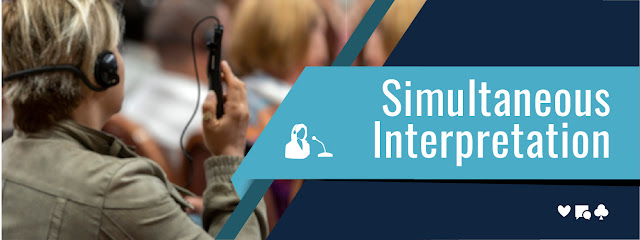Table of Contents
- Introduction
- Equipment Used in Simultaneous Interpreting
- Simultaneous Interpreting: What It Entails
- Examples of Simultaneous Interpreters
- Difference Between Interpreter and Simultaneous Interpretation
- The Difficulty of Simultaneous Interpreting
- Differences Between Consecutive and Simultaneous Interpreters
- When Simultaneous Interpreting is Used
- Conclusion
- FAQs
Introduction
Simultaneous interpreting is a crucial aspect of global communication, enabling seamless dialogue across different languages. In this article, we will explore the intricacies of simultaneous interpreting, its equipment, and its significance in various settings.
Equipment Used in Simultaneous Interpreting
Simultaneous interpreting relies on specialized equipment to facilitate smooth communication. One such system is the analogue interpretation system, which includes microphones, headsets, and interpretation consoles. These systems ensure that interpreters can listen to the speaker and translate in real time, while the audience receives the translations through their headsets.
Another crucial component is the interpreter booth, designed to provide an optimal working environment for interpreters. These soundproof booths reduce background noise and distractions, allowing interpreters to focus on their task. The booths also serve to minimize interference between different language channels, ensuring clarity and accuracy in translation.
Simultaneous Interpreting: What It Entails
Simultaneous interpreting involves the instant translation of spoken language while the speaker is delivering their message. This demanding task requires exceptional linguistic proficiency, cognitive skills, and the ability to think and speak quickly. Interpreters must actively listen to the speaker’s words, comprehend their meaning, and render an accurate translation in real time.
Simultaneous interpreting poses various challenges. It requires interpreters to maintain concentration and mental agility for extended periods, as they need to process information rapidly while delivering coherent translations. Additionally, interpreters must possess subject matter expertise and cultural knowledge to accurately convey the speaker’s intended message.
Examples of Simultaneous Interpreters
Simultaneous interpreters are vital in international conferences and high-level events where participants speak different languages. For instance, the United Nations General Assembly relies on simultaneous interpreters to facilitate communication between diplomats and delegates from around the world. Similarly, international business summits employ simultaneous interpreters to ensure effective communication between participants from different linguistic backgrounds.
Difference Between Interpreter and Simultaneous Interpretation
While both interpreters and simultaneous interpretation involve facilitating communication between languages, there are distinct differences. An interpreter, in general, assists in bridging the language gap between individuals or groups. Simultaneous interpretation specifically refers to the real-time translation of spoken language during a speaker’s presentation or discourse.
The key dissimilarity lies in timing and delivery method. Interpreters may use various techniques, including consecutive interpretation, where the interpreter speaks after the speaker has finished a segment. Simultaneous interpretation, on the other hand, occurs concurrently with the speaker’s delivery.
The Difficulty of Simultaneous Interpreting
Simultaneous interpreting is a challenging task that demands exceptional skills and abilities. Interpreters must possess a high level of linguistic proficiency in both the source and target languages. They need to swiftly process information, make split-second decisions, and deliver accurate translations under immense pressure. The mental and physical demands of simultaneous interpreting can be exhausting, as interpreters must sustain intense concentration for extended periods.
Differences Between Consecutive and Simultaneous Interpreters
Consecutive and simultaneous interpreters differ in their delivery methods. Consecutive interpreters listen to a speaker and take notes, delivering the translation after the speaker pauses. This technique is suitable for small meetings, legal proceedings, and interviews. Simultaneous interpreters, as discussed earlier, translate in real time while the speaker is speaking. This approach is employed in large conferences, international events, and live broadcasts.
When Simultaneous Interpreting is Used
Simultaneous interpreting is used in various settings where effective communication between multilingual participants is essential. It ensures smooth interaction and eliminates language barriers. It is commonly employed in international conferences, diplomatic meetings, courtrooms, business negotiations, and high-level events where accurate and real-time communication is paramount.
Conclusion
Simultaneous interpreting plays a vital role in enabling effective communication across language barriers. Interpreters equipped with linguistic expertise, cognitive skills, and specialized equipment bridge gaps and facilitate dialogue. Their efforts allow for seamless interactions, fostering global understanding and cooperation.
FAQs
- What is simultaneous interpreting? What does it entail?
- What is an example of a simultaneous interpreter?
- What is the difference between an interpreter and simultaneous interpretation?
Simultaneous interpreting is a specialized form of interpretation that involves translating spoken language in real time while the speaker is delivering their message. It requires exceptional linguistic and cognitive skills.
Simultaneous interpreters are commonly found in international conferences, such as the United Nations General Assembly, or business summits with multilingual attendees,conference,interpretation events.
An interpreter, in general, facilitates communication between individuals or groups speaking different languages. Simultaneous interpretation specifically refers to the real-time translation of spoken language



